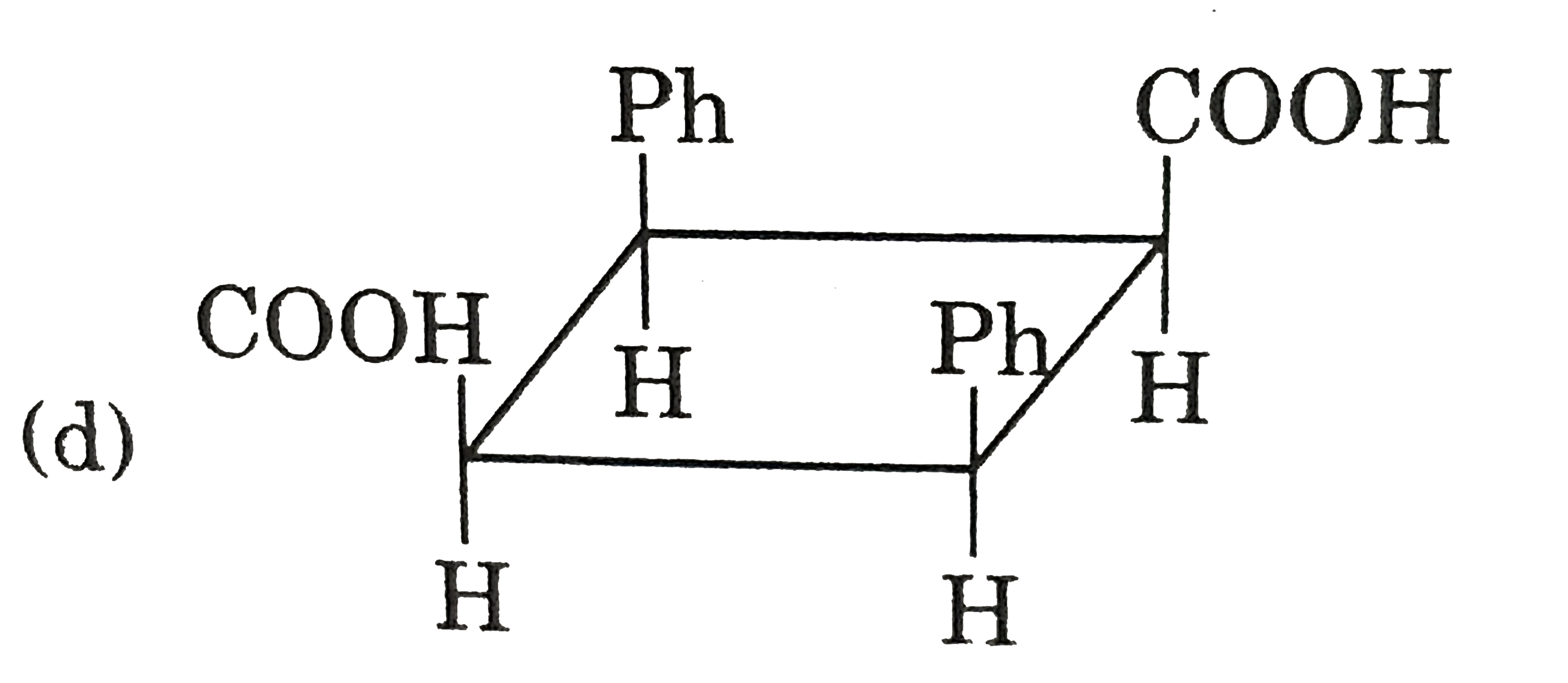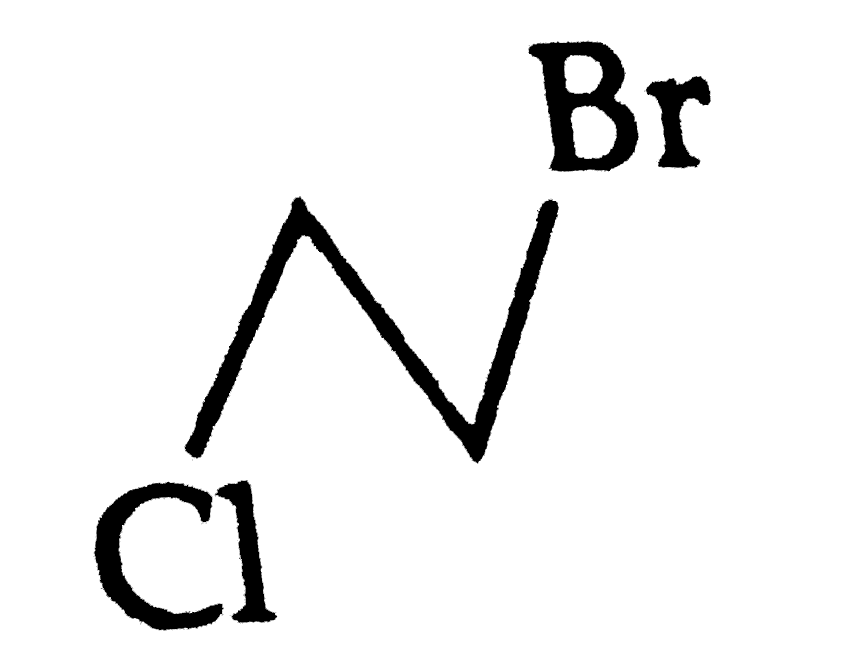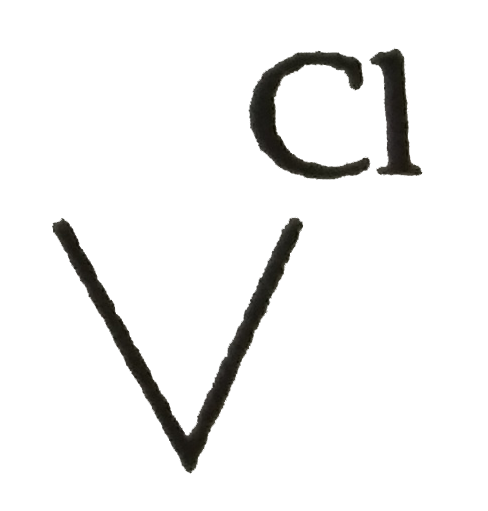Highest positive charge density is observed in which of the following underlined carbon atoms?
I(C––)H2COOH
F(C––)H2COOH
CI(C––)H2COOH
Br(C––)H2COOH
To determine which carbon atom has the highest positive charge density among the given options, we need to analyze the electronegativity of the substituents attached to the carbon atoms.
1. Identify the Carbon Atoms:
We have several carbon atoms in different compounds, each attached to different groups. The groups attached to the carbon atoms include halogens: iodine (I), fluorine (F), chlorine (Cl), and bromine (Br).
2. Understand Electronegativity:
Electronegativity is the tendency of an atom to attract electrons towards itself. The higher the electronegativity of an atom, the stronger it pulls the bonding electrons towards itself. The order of electronegativity for the halogens is:
- Fluorine (F) > Chlorine (Cl) > Bromine (Br) > Iodine (I)
3. Analyze the Effect on Charge Density:
When a more electronegative atom is bonded to carbon, it pulls the electron density away from the carbon atom, resulting in a partial positive charge on the carbon atom. Therefore, the carbon atom will have a higher positive charge density when it is bonded to a more electronegative atom.
4. Compare the Halogens:
- Carbon bonded to Fluorine (F): This carbon will have the highest positive charge density because fluorine is the most electronegative.
- Carbon bonded to Chlorine (Cl): This carbon will have a lower positive charge density than the one bonded to fluorine.
- Carbon bonded to Bromine (Br): This carbon will have an even lower positive charge density.
- Carbon bonded to Iodine (I): This carbon will have the lowest positive charge density since iodine is the least electronegative among the halogens listed.
5. Conclusion:
The carbon atom that is bonded to fluorine will exhibit the highest positive charge density due to fluorine's high electronegativity. Therefore, the correct answer is the option with the carbon atom attached to fluorine.
Final Answer:
The carbon atom with the highest positive charge density is the one bonded to Fluorine (F).
---
We have several carbon atoms in different compounds, each attached to different groups. The groups attached to the carbon atoms include halogens: iodine (I), fluorine (F), chlorine (Cl), and bromine (Br).
Electronegativity is the tendency of an atom to attract electrons towards itself. The higher the electronegativity of an atom, the stronger it pulls the bonding electrons towards itself. The order of electronegativity for the halogens is:
- Fluorine (F) > Chlorine (Cl) > Bromine (Br) > Iodine (I)
When a more electronegative atom is bonded to carbon, it pulls the electron density away from the carbon atom, resulting in a partial positive charge on the carbon atom. Therefore, the carbon atom will have a higher positive charge density when it is bonded to a more electronegative atom.
- Carbon bonded to Fluorine (F): This carbon will have the highest positive charge density because fluorine is the most electronegative.
- Carbon bonded to Chlorine (Cl): This carbon will have a lower positive charge density than the one bonded to fluorine.
- Carbon bonded to Bromine (Br): This carbon will have an even lower positive charge density.
- Carbon bonded to Iodine (I): This carbon will have the lowest positive charge density since iodine is the least electronegative among the halogens listed.
The carbon atom that is bonded to fluorine will exhibit the highest positive charge density due to fluorine's high electronegativity. Therefore, the correct answer is the option with the carbon atom attached to fluorine.
The carbon atom with the highest positive charge density is the one bonded to Fluorine (F).
Topper's Solved these Questions
Similar Questions
Knowledge Check
Which of the following have chiral carbon atom?
AMe⊕NHDEtClϴB C
C D
D
Which of the following has asymmetric carbon atoms ?
A B
B C
C D
D
Which of the following have asymmetric carbon atom?
AF−Cl∣C∣H−Br∣C∣H−HBH−H∣C∣H−Cl∣C∣H−ClCH−H∣C∣H−Cl∣C∣H−HDH−H∣C∣Br−Cl∣C∣OH−CH3
Which of the following has asymmetric carbon atom
View SolutionWhich of the following have asymmetric carbon atom?
View SolutionIn which of the following are all carbon atoms sp-hybridized?
View SolutionThe positive charge of an atom is.
View SolutionWhich of the following contain asymmetric carbon atom –
View Solution
